The Army is overhauling how it fights in combat based on lessons from Russia's invasion of Ukraine, where drones have become the dominant weapon on the battlefield.
The service is rethinking tank tactics, procurement systems, and unit structures as inexpensive drones prove more effective than traditional platforms. War Secretary Pete Hegseth issued a directive in July ordering every Army squad to be equipped with unmanned systems by the end of 2026.
Army Chief of Staff Gen. Randy George said at a June testimony to Congress that technology is changing too rapidly to stick with large programs that take years to develop and can become obsolete once fielded.
Drones Eliminate Concealment on the Battlefield
Ukraine's widespread use of surveillance drones has eliminated traditional cover and concealment on the battlefield, forcing the Army to reconsider decades of infantry and armor tactics.
Drones account for approximately 70 percent of Russian casualties in Ukraine, according to the Modern War Institute at West Point. Both sides use drones constantly for reconnaissance, artillery spotting, and direct attacks.
Speaking with NBC News, Ed Arnold, a European security expert at the Royal United Services Institute, said, “There's nowhere to hide on the modern battlefield.” He added that using drones to spot targets is one of the most important lessons from Ukraine, particularly for calling in artillery strikes.
Recognizing this reality, the Army is flooding its formations with unmanned systems at an unprecedented scale. Col. Joshua Glonek, commander of the 3rd Brigade, 10th Mountain Division, said his unit employed more drones during their January 2025 rotation in Germany “than have ever been brought to a combat training center before.”
The brigade fielded 144 experimental drones across the formation during the exercise, hoping to improve the Army's reconnaissance and target acquisition capabilities. Soldiers also trained on how to counter enemy drones using new systems such as jammers.
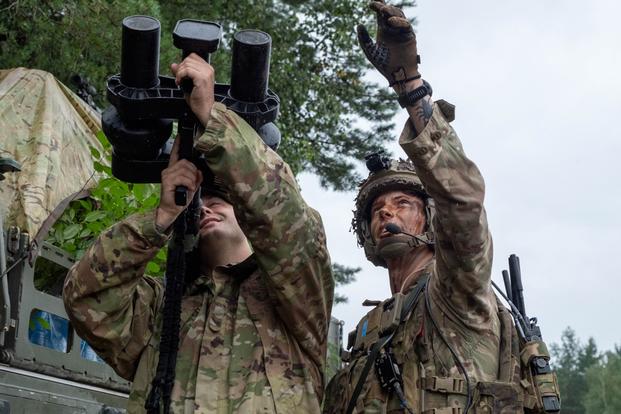
Inexpensive Drones Destroying Costly Tanks
But surveillance is only half the problem. These same drones are also upending the economic costs of warfare.
Russian FPV and 'kamikaze' drones, costing around $400 each, have destroyed several M1 Abrams tanks worth $8 million to $10 million per unit.
In some sectors of the war in Ukraine, similar direct-attack drones have been responsible for up to 90 percent of Russian vehicle losses.
In Operation Spiderweb in June, Ukraine used up to 117 FPV drones to strike five Russian airbases, hitting 41 aircraft, including Tu-95 and Tu-22 strategic bombers and causing an estimated $7 billion in damage, according to Ukrainian officials.
The scale of destruction has convinced Army leaders that the United States needs its own mass production capability. The U.S. Army expects to domestically produce upward of 10,000 small drones each month starting in 2026, DefenseScoop reported.
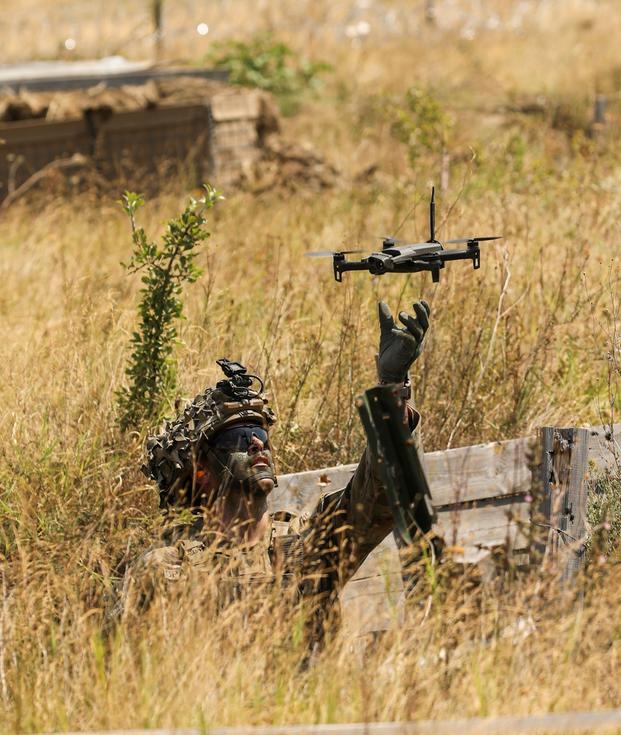
Ukraine's New Procurement System
The Army is also studying how Ukraine gets drones from the factory to the front.
The Ukrainian government has created a digital procurement system called “Brave1” that allows commanders at the front to order drones directly from manufacturers, with delivery in as little as a week.
Senior military officers at a U.S. base in Wiesbaden, Germany, studied Ukraine's system, where front-line units can browse a digital marketplace and order equipment as easily as shopping online. Ukraine's Ministry for Digital Transformation oversees Brave1, which lists hundreds of drones and other equipment for immediate purchase.
Ukrainian drone units document their strikes and earn points based on the value of targets destroyed. They can redeem those points to order more advanced drones on the Brave1 marketplace, according to Time magazine. A destroyed Russian tank earns 40 points, while a multiple-rocket launcher is worth up to 50 points, incentivizing Ukrainian soldiers to destroy enemy units.
Ukrainian drone workshops can also provide emergency repairs in hours rather than days or weeks, keeping systems operational at the front—a capability U.S. officials are hoping to replicate.
“We're going to have to be more agile," Gen. George said. "Drones are going to constantly change.”
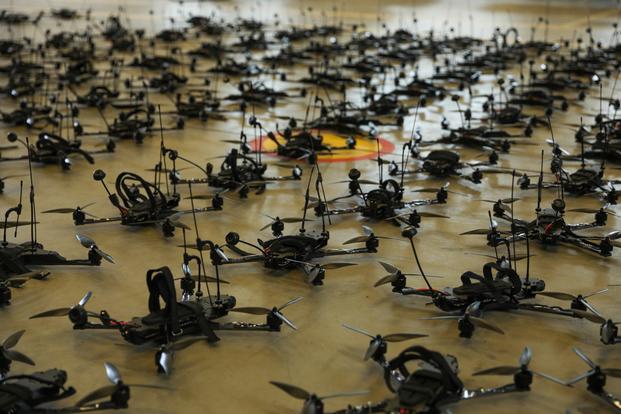
Tanks Shift to Support Role
The drone threat is also forcing a fundamental rethinking of how the Army's heaviest platforms operate on the battlefield.
Speaking on the “War on the Rocks” podcast, Secretary of the Army Daniel Driscoll explained that the amount of sensors on the battlefield means commanders can no longer push tanks as far forward in formations as they used to because inexpensive drones can take them out.
Driscoll called for tank battalions to become "a lot leaner," limiting their exposure to aerial threats. Going forward, the Army plans to deploy drones ahead of armored units to identify threats and clear pathways.
Both Russian and Ukrainian forces have suffered heavy tank losses from drone strikes during the war. The Army is exploring using drones to lead initial assaults, allowing tanks to provide firepower from defended positions rather than spearheading attacks.
Following the halting of the M10 Booker Light Tank program, the Army is hoping to redesign the Abrams to make it lighter, have a remote-controlled turret, and add better protection from drone threats. A disabled Abrams currently requires two recovery vehicles to extract it from the battlefield, a disaster waiting to happen with drones circulating overhead.
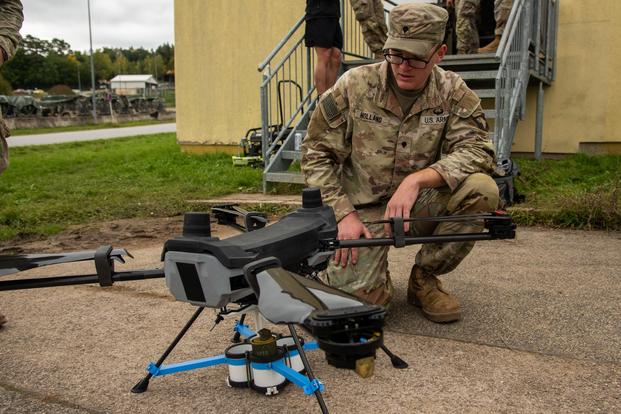
Army Creates Drone-Led Strike Units
Beyond protecting tanks, the Army is creating entirely new formations built around drones as the primary weapon system.
The Army is reorganizing its infantry battalions to fight drone-first battles, creating specialized units that use unmanned systems to find and kill the enemy before traditional ground forces make contact.
The 10th Mountain Division's 3rd Brigade recently created and tested three “strike companies” with 80 soldiers each, designed to operate ahead of battalions. Each company includes a scout platoon, mortar platoon, and drone platoon with squads to fly surveillance drones, loitering munitions, and counter-drone systems.
The 3rd Brigade now fields Anduril Ghost drones that can fly for more than an hour, PDW C100 reconnaissance systems, and Switchblade 600 loitering munitions that use the same warhead as the Javelin anti-tank missile. Soldiers from the 101st Airborne Division now fly drones with 3D-printed parts, while troops from the 10th Mountain Division also carry Skydio X2D systems in their rucksacks.
Hegseth wrote in his July directive that lethality will not be hindered by self-imposed restrictions, especially when it comes to technology the U.S. invented but was slow to pursue. “Drone technology is advancing so rapidly, our major risk is risk-avoidance,” Hegseth wrote.
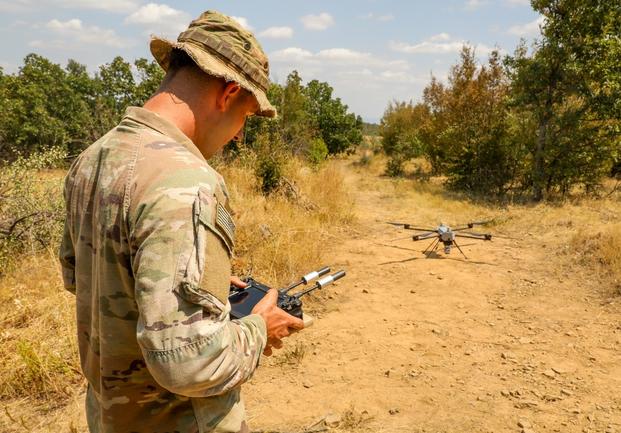
What it Means for the Soldiers on the Ground
All these changes—advanced procurement systems, reorganized units, new tactics—ultimately come down to individual soldiers learning entirely new skills.
The Army's drone transformation will fundamentally change what it means to be an infantryman. By the end of 2026, every squad will carry small drones alongside rifles and radios as standard equipment.
Soldiers are already learning these new skills. The Army launched its first official drone course at Fort Rucker, Alabama, in August, teaching troops to fly, build, and repair drones in combat. The three-week course includes 20 to 25 hours of simulated flying using video game-style controllers, followed by hands-on training with live systems. Students learn to manufacture drone parts using 3D printers and computer-aided design software—skills critical for keeping systems operational in the field.
“This is a catch-up,” Capt. Rachel Martin, the course director, said in an Army release. “We're behind globally, and this is our aggressive attempt to close that gap.”
Col. Nick Ryan, who oversees drone integration for the Army, told CNN the goal is for soldiers to treat drones “as if it was their personal weapon, their radio, their night-vision goggles or a grenade.” He added: “That it's just something they're so used to and so familiar with, that it's just part of their standard kit that they take with them everywhere they go.”
Training is expanding rapidly across the force. In Europe, every Army unit rotating through the continent receives company-level training on drones, including live-fire exercises. At Fort Bliss, Texas, soldiers practice flying drones through hanging tires and doorways in an “FPV gym,” then guide them into cardboard replicas of enemy armored vehicles.
The changes mean today's soldiers must master skills that didn't exist in military doctrine five years ago—but the Army believes those skills could save their lives on a future battlefield.














